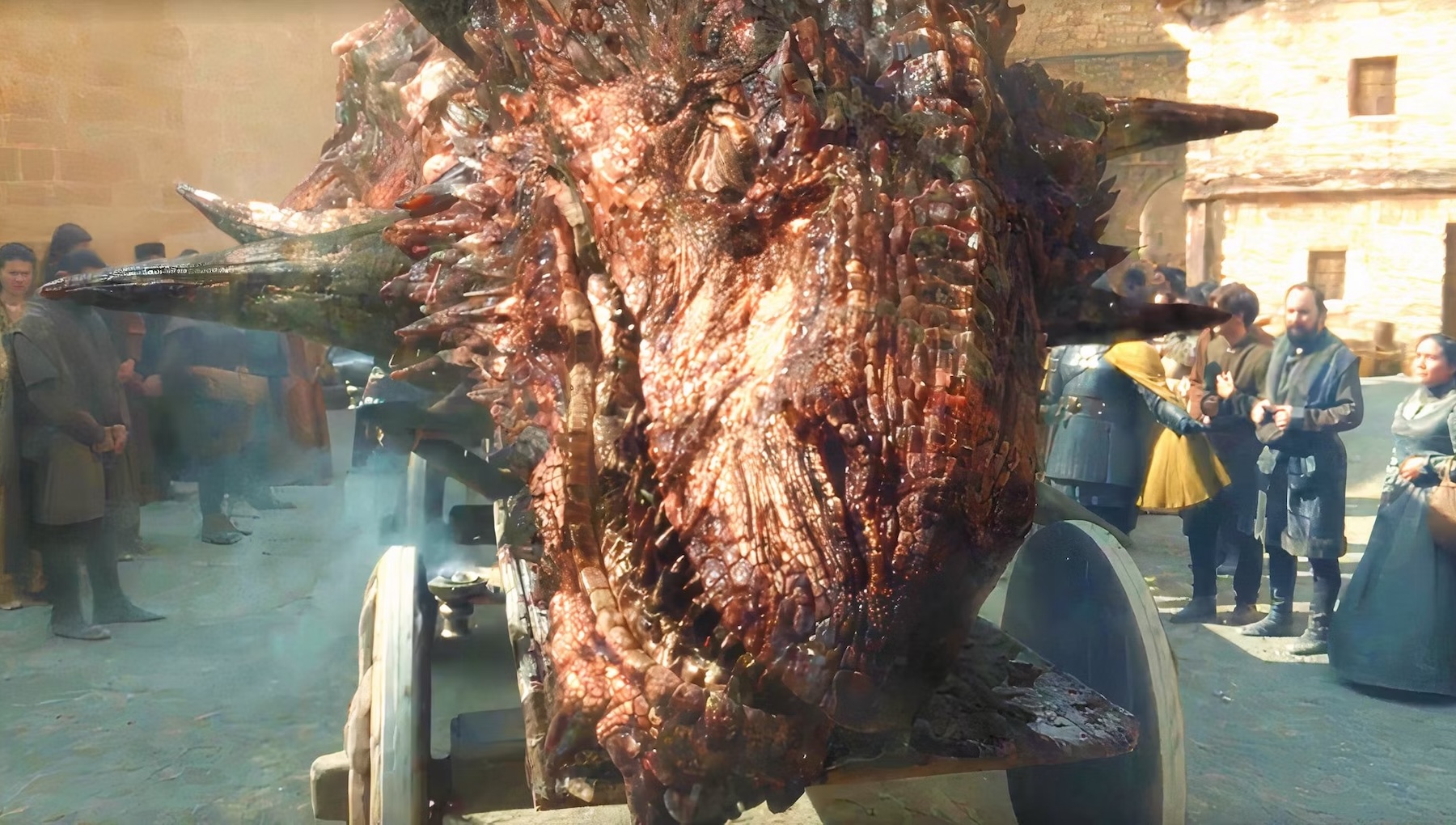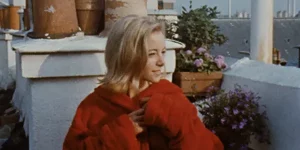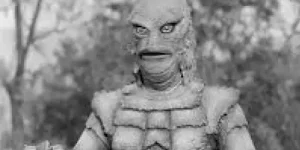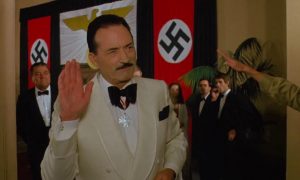
This article contains spoilers for House of the Dragon season 2 episode 5.
A dragon is dead, and a king is alive. Yet no one seems to be celebrating. This is the chilling introduction to the Greens’ cause that we’re greeted to during the fifth episode of House of the Dragon season 2, “Regent.”
“Don’t they realize we won the battle?” the perpetually outfoxed Ser Criston Cole whines to a subordinate as he hears whispers in the streets of “abomination.” Aye, you technically won the battle, Cole, but the way your side handles that victory betrays the war you’re already beginning to lose. It’s a war against Rhaenyra, mayhaps, but it’s also a war for the future well beyond this generation—and a war which will determine what role the Targaryens will have in it.
This is best illustrated by the severed, desecrated head of a dragon which is dragged behind Cole’s horses like a prized fish being carted off to market. In fact, when one boy tells his father, “I thought dragons was gods,” his father simply shrugs, “It’s just meat.” This line foreshadows the horrors to come for those who have read George R.R. Martin’s Fire & Blood, but it also offers a fascinating contrast between the two sides of this war and the values kept by those who describe themselves as “Greens” versus “Blacks.”
The central tenet of the Targaryens’ power has always been their dragons and the mystique created by that boiling blood. Yes, the preternatural silvery blonde hair and violet eyes (at least in the book) has always given most Targaryens an ethereal appearance, but it is dragonfire which causes people to bend the knee and allow this family to indulge in nearly any depravity or social taboo.
The Targaryens are of course aware of this privilege and guard it jealously, a fact which becomes integral to the ending scene of “Regent” as Queen Rhaenyra and her heir discuss who else could they get to ride a dragon. However, what’s striking about the Greens’ cause at this point is that it barely qualifies as a traditional Targaryen claim.
By the end of “Regent,” we learn that King Aegon II’s younger brother—and also his attempted assassin—has assumed the titular power of regent while the badly injured king hangs between life and death in his bed. They are both Targaryens, yes, with Prince Aemond especially modeling himself after living legends in the family like his uncle Prince Daemon. However, they grew up in the shadow of an enfeebled and dying King Viserys and were essentially raised by everyone around them except other Targaryens. There was Criston Cole who served as their master at arms and proverbial big brother, and then there’s their mother Queen Alicent and their grandfather, Ser Otto Hightower, Hand of the King.
Aegon and Aemond are so beholden to their maternal line that they even began adopting the Hightower colors after their mother—replacing the red and black Targaryen sigil claimed by Aegon the Conqueror in favor of an emerald green. This color honored their mother, but it also in retrospect betrays a growing distance from the source of Targaryen power. It aligns them closer to Oldtown than Old Valyria.
This transition in aesthetics turned out to be a harbinger of a transition in values as well. One of the most interesting additions to George R.R. Martin’s lore in House of the Dragon is the revelation that Aegon the Conqueror invaded Westeros at least partially because of a vision he had of the coming War for the Dawn. He foresaw the coming army of the dead and thought the future of the world depended on dragons being in firm control of Westeros. This hidden motive has apparently been passed down from every king to his heir in the more than a hundred years that followed, including from Viserys to Rhaenyra, and then Rhaenyra to Jacaerys.
This guarded responsibility has been reflected in the public admiration the Targaryens have cultivated for their dragons too. These fire-breathing beasties might be glorified magical WMDs, but the Targaryens have carefully cultivated awe from the Westerosi citizens for their majesty, as well as treated them as much as beloved family pets as they did political superpowers. They convinced the Westerosi smallfolk to see these creatures with centuries-long lifespans as “gods,” and most of the greatest Targaryens in turn had greater bonds with their dragons.
The only Green Targaryen that has shown a profound bond with his fire-steed is Prince Aemond, but this cycloptic regent has used old Vhagar to slaughter other dragons with malice: little Arrax, barely better than a fledgling beneath Prince Lucerys’ legs when Aemond let Vhagar behead it; Sunfyre, his own brother’s young dragon who was so neglected by the king that golden steed practically wagged his tail at the chance of getting to fly… and now Aemond and Vhagar have attempted to ensure Sunfyre never flies again; and then there’s Meleys.
Meleys was the one dragon who so far posed a threat to Vhagar and the Greens’ claim to power and was an enemy Aemond was wise to smite. Yet his good friend Ser Criston Cole along with Ser Gwayne Hightower are parading Meleys’ head through the streets with the ridiculous boast of “behold the traitor dragon Meleys!”
The idea that a dragon could be a traitor to anything as petty as the squabbles of man is to take something divine and make it ordinary. Ugly. They’ve made Meleys meat. This also reveals the lack of vision in the Greens’ cause and a dangerously complacent sense of entitlement over this power. For well over a hundred years—for the Targaryens’ history as dragon riders goes back centuries—the Targaryens have jealously guarded this power, and given it an air of divinity.
The Greens view it as limitless, expendable, and perhaps even a bit with resentment. They look at dragons not like the heirs of the greatest civilization the world has ever known, but like small-minded barons and aristocrats who’ve spent generations looking up at the fire-breathing reptiles in fear and resentment. They look at them like Hightowers, not Targaryens.
That mistake will cost them and the Blacks dearly—who are themselves in desperation about to invite non-legitimized relatives into sharing in dragon power. That too could prove ominous since we know the dragons are long gone by the time Daenerys Targaryen is born during a raging storm. And in their absence, the Targaryen dynasty, and any ability to face the coming Long Night, will vanish from the world like a snuffed candle.
The post House of the Dragon: The Greens Treat Dragons Like Hightowers, Not Targaryens appeared first on Den of Geek.









